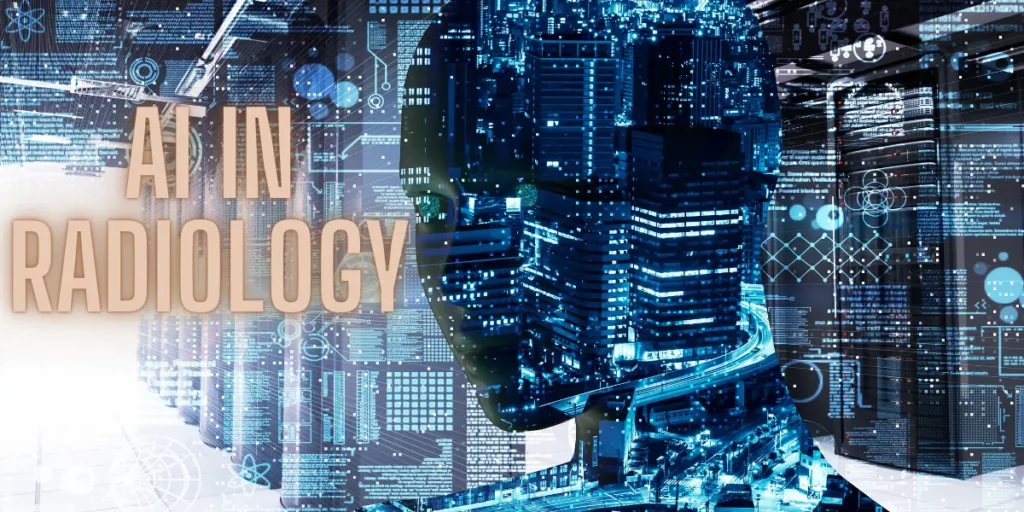“As AI in Radiology rapidly advances, could it soon outperform human expertise in diagnosing complex medical conditions, transforming the future of medical imaging forever?”
Gaining momentum most forcefully in radiology, where AI methods are shown to profoundly excel in recognizing patterns in imaging data that are otherwise complex, to free up time for radiologists to concentrate more on the complexities of medicine, diagnostic accuracy, and patient care.
The Role of AI in Radiology

AI has changed radiology because it can automate tasks that are normally done by a human. In radiology, AI algorithms are employed to identify abnormalities in images, such as tumors or fractures, where humans may sometimes find difficulties in determining.
How AI Works in Imaging
AI imaging is the application of machine learning models onto medical images like X-rays, MRIs, CT scans, and ultrasounds for diagnosis. AI is good at detecting patterns within images, which through extensive data sets can distinguish between healthy tissue and abnormalities.
AI systems now can generate reports with their analysis, or flag abnormal areas with possible treatment options, thus helping radiologists reduce the effect of human error and provide more precision in diagnosis.
Know More: How AI and Ambient Clinical Intelligence Cut Physician Burnout
AI in Medical Imaging: Advancing MRI Through Accuracy and Speed
Recent research has shown that AI can indeed decode an MRI scan with accuracy comparable to that of experienced radiologists. In the actual sense, AI can read MRI scans and produce reports, but human oversight remains very critical to comprehensive care.
I respectfully disagree, AI will boost doctors’ productivity and efficiency without replacing them. Its impact will be especially significant in imaging and diagnostic specialties like radiology, dermatology, and pathology. Nevertheless, the essential human elements of medical…
— Marc J. Saint-Jour (@MarcJ2327) September 14, 2024
Advancements in AI Imaging
AI techniques tend to be more suited to automate the most repetitive work- fracture identification in X-ray studies or early-stage cancer identification in CTs. AI in radiology greatly improved the accuracy of diagnoses in breast cancer detection, with fewer false positives and fewer biopsies, according to a 2023 study published in PubMed.
Will Artificial Intelligence Replace Radiologists?
Many people are also concerned about how AI will replace radiologists. Harvard Medical School notes that AI can act like “co-pilots” of radiologists, thus relieving them from mundane procedures and dedicating more time to more difficult cases. The entire partnership between AI and radiologists will result in efficient workflows and more personalized treatment of every patient.

Future of Digital Radiology
Indeed, this is a paradigm shift within medical imaging, as AI integration in radiology is expected to replace much of the current tasks. AI in Radiology, this technique will be able to interpret imaging data faster than a human radiologist. Hence, real-time decision-making might be facilitated, especially in emergencies. Even a diagnosis of trauma or stroke at the right time can mean life or death.
The Role of AI in Oral Medicine and Radiology
AI algorithms may be supported in the diagnosis of diseases involving the mouth with the help of dental X-rays and imaging data, which can identify caries, tumors, and periodontal disease.
Predictive diagnostics could also be an application for an AI system as this will help clinicians in the early treatment of oral health disorders before their condition worsens.
FAQ
1. What are the applications of AI in MRI?
The accelerated interpretation time of MRI scans and enhanced image quality give the possibility to achieve a more precise diagnosis by radiologists, particularly in acute conditions, such as stroke.
2. How does AI imaging work?
AI imaging works by analyzing large-scale medical images, learning patterns about known and unknown patterns or abnormalities such as tumors, fractures, or infections, and then, also makes a diagnostic report to support the diagnosis from the radiologists.
3. Is it possible for AI to read MRI scans?
Sure, AI can certainly interpret MRI scans, and provide prompt and accurate interpretations; yet, radiologists will be involved in oversight and complex decision-making.
4. Will artificial intelligence supplant radiology?
No, probably not, as AI is unlikely to replace the practicing radiologist but work with the radiologist instead, thereby automating everyday procedures and allowing the radiologist to take on more challenging cases that truly require the expertise of the human brain.
Conclusion
AI in radiology is not just an innovation; it heralds the start of a revolution in healthcare. Its ability to enhance the diagnostic process, improve the interpretation of images, and thus provide much more precise customized treatment is making healthcare delivery faster, smarter, and better.



